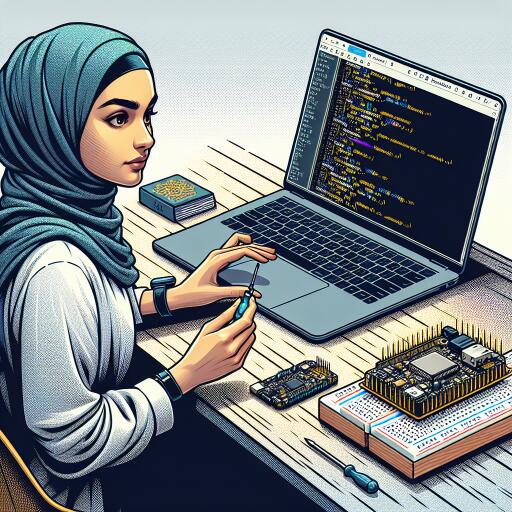Unlocking IoT Development with Lua and ESP32-S3 Using XEdge32
Exploring the innovative realm of Internet of Things (IoT) development has become more thrilling with the introduction of XEdge32, a platform that empowers developers to harness the power of the ESP32-S3 through the Lua programming language. This combination not only paves the way for rapid development of IoT devices but also opens up endless possibilities for creators at all skill levels.
The ESP32-S3 microcontroller, known for its dual-core 240MHz CPU, integrated WiFi capability, and abundant GPIOs, has been a go-to choice for developers keen on building efficient, low-cost IoT solutions. The real breakthrough, however, lies in the synergy with XEdge32, which brings the simplicity and power of Lua into the mix. This platform is designed to democratize IoT development, making it accessible to a broader range of enthusiasts, including those without extensive experience in C programming.
Getting Started with XEdge32 and Lua
Step-by-Step Installation:
- Begin by connecting your ESP32-S3 or ESP32-WROVER module to your computer using a USB cable.
- Initiate the XEdge32 installation process by navigating to the installation section of the XEdge32 platform. Here, you will find an option to ‘Install XEdge32’.
- Select your device when prompted. Look for a device name that includes ‘serial’ to ensure correct identification and follow the on-screen instructions to complete the installation.
- Upon successful installation, reset your ESP32 by disconnecting and reconnecting the USB cable. This action will activate Access Point (AP) mode, preparing your device for the next steps.
For newcomers, this process might seem detailed, but it is straightforward and designed to ensure a smooth start.
Programming with Lua on XEdge32
With XEdge32 installed, the next phase is connecting to your device and jumping into programming. Once in AP mode, the ESP32 broadcasts a WiFi signal. Connect to this network using the standard password (typically ‘12345678’), opening the door to begin coding directly on your device through the browser-based Integrated Development Environment (IDE).
Starting with a simple “Hello World” in the Lua shell within the IDE demonstrates the effectiveness of your setup. This basic test is an exciting milestone, marking the beginning of your journey into Lua programming on the ESP32 with XEdge32.
Switching to Station Mode
To fully leverage the capabilities of XEdge32, transitioning to Station Mode is recommended. This mode not only facilitates connection to the internet but also enhances the usability of IoT functionalities. The switch is seamless, and once in Station Mode, developing complex scripts and applications becomes significantly more streamlined.
In Station Mode, creating your first Lua script involves:
- Accessing the Lua Shell from the IDE.
- Creating a new folder for your application and an executable Lua file within it.
- Writing and running your first script. As an example, a factorial function demonstrates the ease with which you can implement logic in Lua.
This exercise showcases not only Lua’s syntactic simplicity but also the efficient and powerful development environment XEdge32 offers.
Conclusion and Future Possibilities
The journey through developing IoT applications with XEdge32 and Lua on the ESP32-S3 showcases a promising pathway for developers. This platform not only simplifies the intricate process of IoT development but also provides a comprehensive suite of tools for secure, efficient, and cost-effective product creation. Whether you are a seasoned developer or new to the world of IoT, the combination of Lua’s simplicity and ESP32’s robustness facilitated by XEdge32 offers an unparalleled opportunity to innovate and explore the vast possibilities within the IoT domain.
As we continue to delve into new technologies and development methodologies, let’s embrace the opportunities that platforms like XEdge32 present. With its focus on ease of use, security, and efficient development, XEdge32 is truly a gateway to the future of IoT projects. Join us in this exciting journey and let’s unlock new possibilities in IoT development together.
Welcome to the future of IoT development with XEdge32 and the ESP32-S3!










